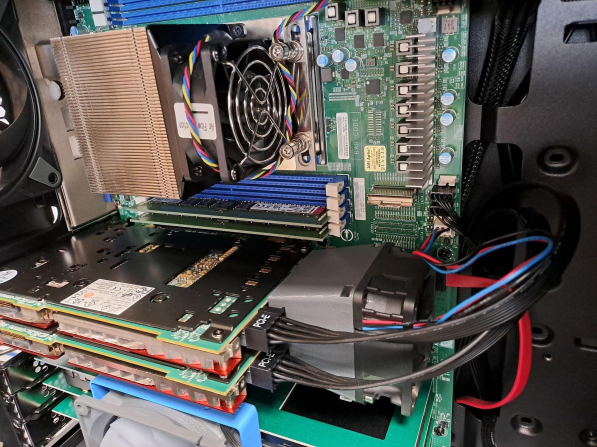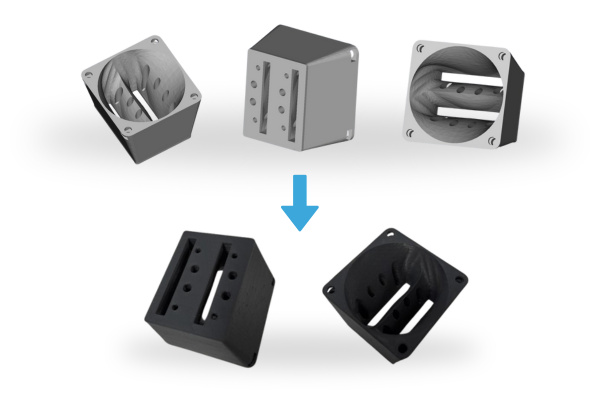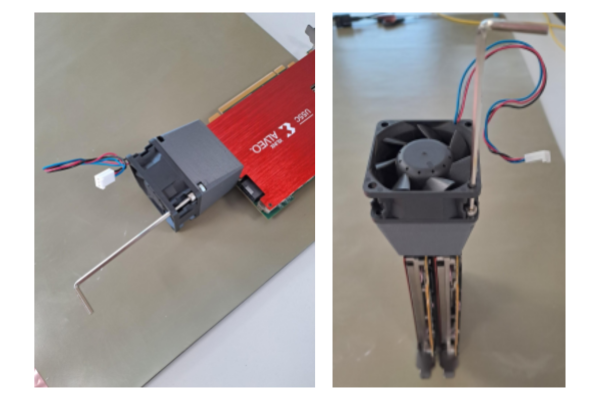An Easy Approach to Cool High-Performance FPGA Beasts in Lab Setups
Our Mission: If It Is Packets, We Make It Go Faster!
And with packets we mean:
- Networking using TCP/UDP/IP over 10G/25G/50G/100G Ethernet
- PCI Express (PCIe), CXL, OpenCAPI
- Data storage using SATA, SAS, USB, NVMe
- Video image processing using HDMI, DisplayPort, SDI, FPD-III.

In today’s technologically advanced world, where the demand for high-speed networking and storage continues to surge, FPGAs have become essential for powering a wide range of innovative applications, including AI inference in data centers, autonomous vehicle systems, and industrial connectivity. These performance-intensive workloads often rely on multiple high-performance FPGA cards, and the resulting high density configurations make efficient heat dissipation critical to prevent overheating and ensure sustained performance as well as device longevity.
High-performance FPGA cards, such as AMD Alveo™ cards designed for data center servers, depend on sufficient airflow for optimal cooling. However, in certain setups — like desktop test environments — achieving proper airflow can be challenging due to the absence of enclosures to guide air through the FPGA cards or no suitable mounting points for fans. While some cards, such as the AMD Alveo™ U280, offer both active and passive cooling options, others, like the AMD Alveo™ U55C High-Performance Compute Card, do not.

To address the challenge of efficiently cooling multiple high-performance FPGA cards, MLE designed a custom 3D printed fan duct that allows a standard 60mm fan (e.g. Delta fan AFB0612EH-A) to be securely attached to AMD Alveo™ U55C cards to cool one or two neighboring cards. The fan duct has been tested by mounting the duct directly onto the card, followed by attaching the fan to the duct. When using two U55C cards, pre-mounting the fan assembly before installing the cards in the system helps smoothen the installation process.

At MLE the cooling setup utilizes a 4.5 watt high-pressure fan, which is operated at full speed in the lab without using the PWM control pin. This configuration effectively reduced the AMD Alveo™ U55C card temperature from 80°C to a stable 40°C. For most FPGA designs and standard office or lab environments, running the fan at lower speeds would be sufficient to provide efficient cooling. The card temperature can be monitored via JTAG, and fan speed can be adjusted to balance noise levels with heat dissipation performance.
*Note: The fan duct is mounted at the rear of the FPGA card, extending beyond the width and length allowed for two full length PCIe cards. Therefore, it is best suited for neighboring cards shorter than three-quarters of full length, such as the AMD Alveo™ U55C card.
With MLE’s custom service, this fan duct cooling design offers a reliable and effective option for deploying high-performance FPGA cards in desktop or lab environments, and provides users with greater flexibility in using AMD Alveo™ U55C cards outside server setups!
If you own an AMD Alveo™ U55C card and want to 3D print your own fan duct, find the necessary files on Thingiverse for free: https://www.thingiverse.com/thing:6914957
🌐 www.missinglinkelectronics.com
MLE (Missing Link Electronics) is offering technologies and solutions for Domain-Specific Architectures, which focus on heterogeneous computing using FPGAs. MLE is headquartered in Silicon Valley with offices in Neu-Ulm and Berlin, Germany.
